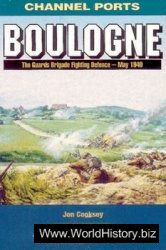In the 1840s, as white settlers opened up new tracts of land in the future Australian territories of both Queensland and Victoria, Aborigines organised themselves to resist. In 1843, Yagan, an Aborigine in Victoria, told George Moore, the state’s advocate-general, what was on his mind: ‘Why do you white people come in ships to our country and shoot down poor black fellows who do not understand you? You listen to me! The wild black fellows do not understand your laws.’1 In his land, Yagan continued, ‘every living animal that roams the country, and every edible root that grows in the ground are common property. A black man claims nothing as his own but his cloak, his weapons, and his name. . . He does not understand that animals or plants can belong to one person more than to another.’ Sometimes, Yagan explained, ‘a party of natives come down from the hills tired and hungry, and fall in with strange animals you call sheep. Of course, away flies the spear and presently they have a feast. Then you white man come and shoot the poor black fellows!’ Yagan flnished with a warning for the lawyer: ‘[F]or every black man you white fellows shoot, I will kill a white man! . . . I will take life for life’.2 The Aborigine war against the settlers was already well under way.
In 1840, a group of Aborigines in the territory about to be called Queensland attacked a party of government surveyors measuring out land for new settlement. Aborigine territory in the northern part of New South Wales had long been under threat, while Moreton Bay (soon to become Brisbane, Queensland’s capital) had earlier been recognised as land set aside for Aborigines. General Sir George Gipps, the military governor, now wanted it thrown open to white settlement. He reckoned that if labour were obtained from the local colony of transported convicts, the economic prospects for the region looked good. In June 1840, he ordered a land survey to be made. G. C. Stapylton and several settlers - as well as William Tuck, a convict - were employed on the survey team.
Recognising that the surveyors’ arrival was the flrst step that would lead to the seizure of their land, the Aborigines planned to stop them. A group including two men called Merridio and Neugavil attacked the surveying party, and Stapylton and Tuck were killed. The Aborigine attack was so successful that the governor suspended the survey.3
The British setback was only temporary, and retribution came the following year. Merridio and Neugavil were captured and taken to Sydney for trial, but no evidence was provided to indicate that they had been directly involved in the attack. They were certainly not the only Aborigines present, and they may have been wholly innocent. Tried for Tuck’s murder, they were found guilty in May 1841 and hanged at Moreton Bay - an event recorded as Brisbane’s first execution. It was not the last, nor did it halt the Aborigine resistance.
A small Aborigine resistance group in the state of Victoria attacked white settlers in October 1841, killing two sealers near Westernport. A newspaper report recorded that women rebels were ‘as well skilled in the use of firearms as the males’4 The group’s leaders were Timninaparewa, known as Jack Napoleon, and Jemmy Smallboy, known as Bob. Timninaparewa came originally from Tasmania, and was once a protege of George Robinson, the missionary who had rounded up the Aborigines in the early 1830s and confined them on Flinders Island.5 He had been brought to the Australian mainland in 1837 to assist in Robinson’s campaign to ‘civilise’ the Aborigines of Victoria. The British authorities had hoped that the surviving Tasmanian Aborigines, suitably ‘tamed’, might somehow induce those on the mainland to be more friendly towards the white invader. A difficult task.
Timninaparewa had been brought over with four others, including Truganini, a woman sometimes called Lalla Rookh. His small band of two women and three men had no intention of helping the settler cause, and he gave vivid details of his Tasmanian experiences to the Aborigines in the area around Port Phillip (later to be called Melbourne, the capital of Victoria). He told them, according to a contemporary account, of ‘what they had suffered at the hands of the white man, how many of their tribe had been slain, how they had been hunted down in Tasmania’ Now, he said, ‘was the time for revenge.’
So instead of ‘civilising’ the local Aborigines, Timninaparewa enlisted their support for an armed resistance campaign against the embryonic white settlements of Victoria. A report on Timninaparewa’s group written by Charles La Trobe could not explain ‘why they left Mr Robinson’s service and much less. . . their suddenly betaking themselves to the Bush’ Yet in the course of about six weeks, ‘they committed two murders, fired at and wounded four men, and robbed seven [sheep] stations with arms in their hands’
Their resistance was short-lived; they were captured in November while asleep. Timninaparewa and Jemmy Smallboy were tried and executed in January 1842, while Lalla Rookh and the two other women were sent back to Tasmania.
White settlers in Australia were soon experimenting with new ways of destroying the native population. A settler expedition exploring to the north of Brisbane in 1842 found a white man living with the Aborigines. He told them the story of a white shepherd killed by Aborigines at a sheep station at Kilcoy Creek. The white farmhands had decided to retaliate, giving flour to the Aborigines with which strychnine had been mixed. Some flfty or sixty of them were killed.6 Extermination of the Aborigines became a commonplace on the expanding frontier for many years to come. Strychnine, a component of sheep-dip, was readily available, and became a favoured murder weapon.7




 World History
World History









